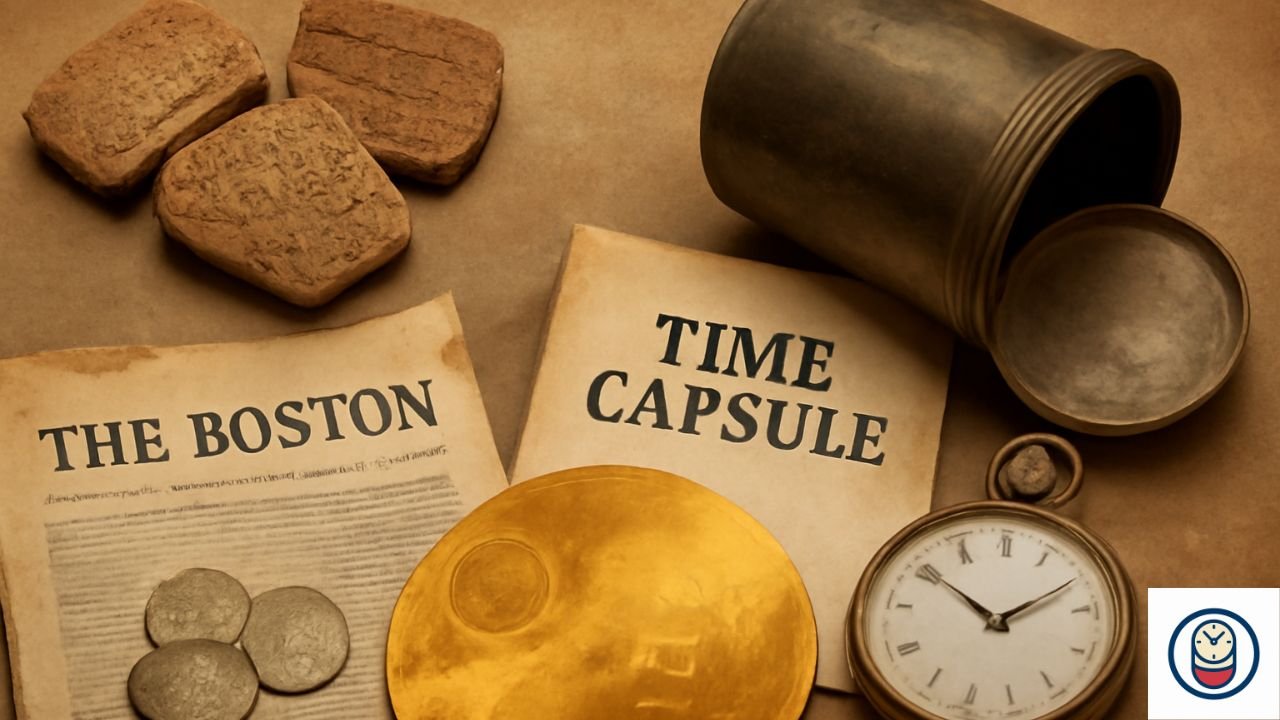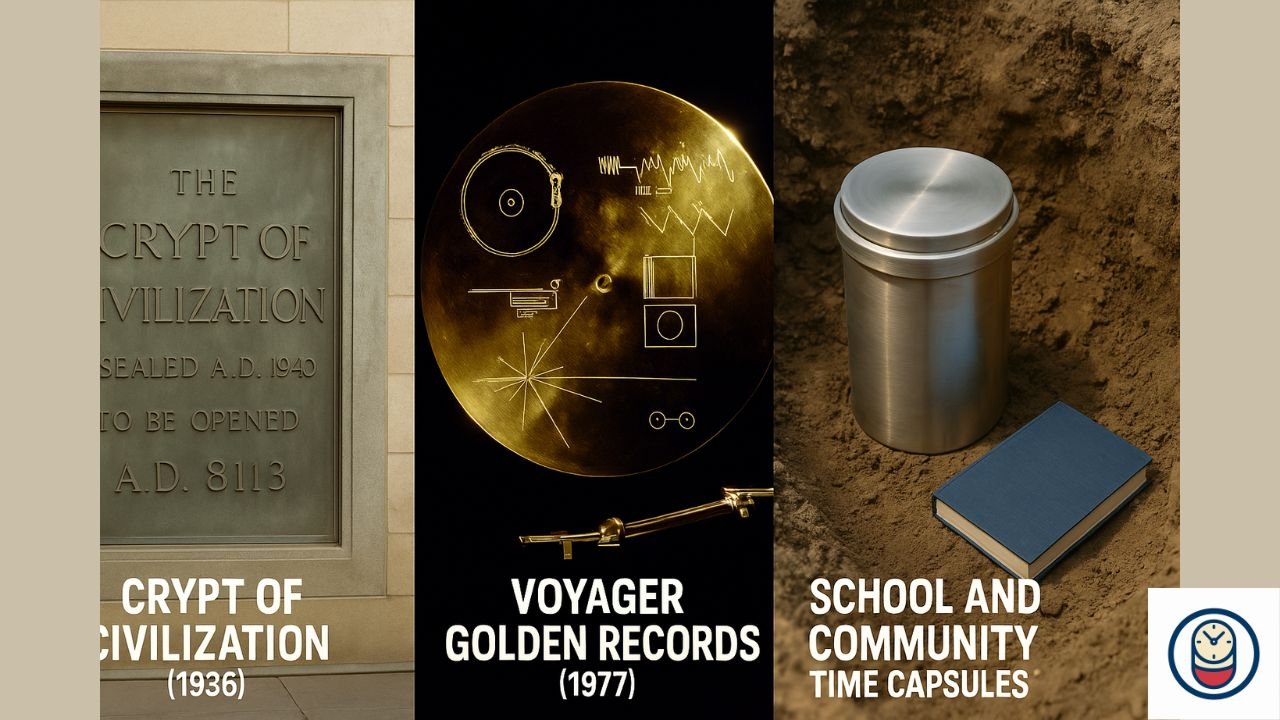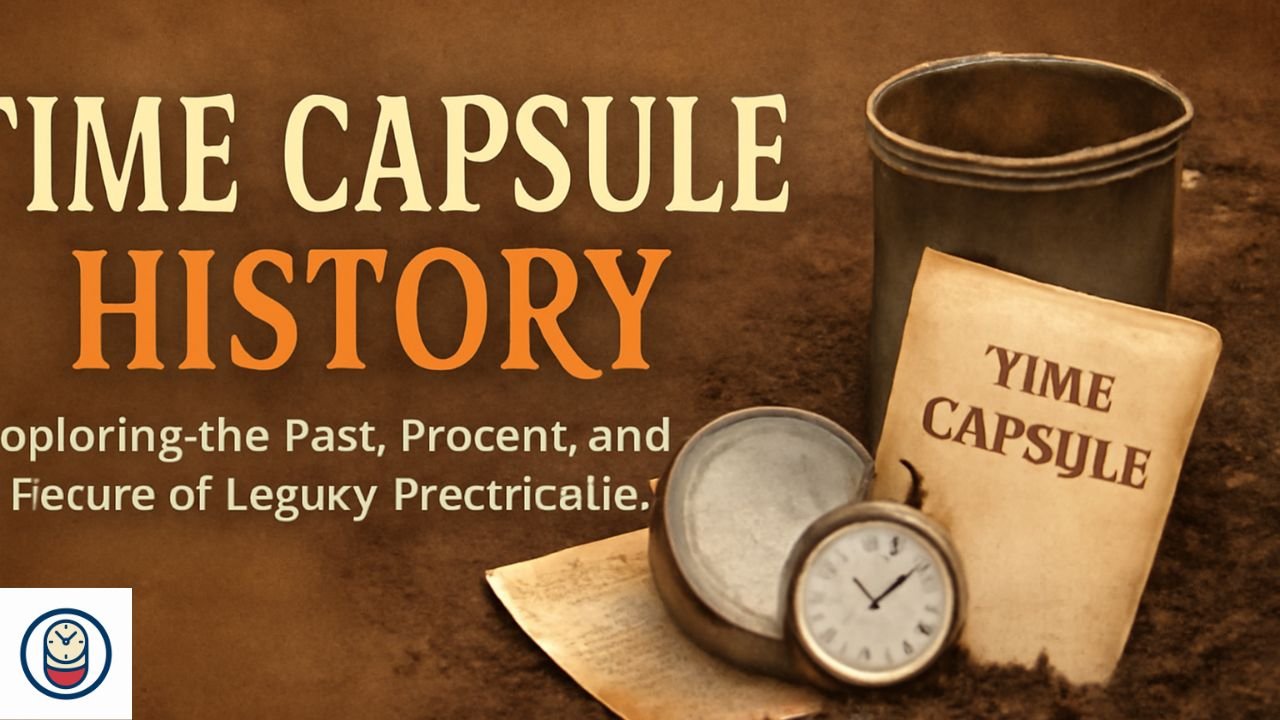Imagine uncovering a hidden treasure chest buried beneath the earth, sealed for centuries and packed with relics from a bygone era. This is the essence of the history of time capsules—a fascinating tradition of preserving moments for future generations.
One of the earliest and most iconic discoveries occurred in 1935, when workers in Massachusetts unearthed a time capsule buried in 1795 by revolutionary leaders like Samuel Adams and Paul Revere. Inside were coins, newspapers, and a silver plate—offering a rare glimpse into 18th-century life. This moment wasn’t just an archaeological find; it was a powerful connection between the past and the present.
Time capsules are more than just relics. They are physical manifestations of human curiosity, memory, and the desire to communicate with future generations. Whether sealed in the ground, hidden inside walls, or digitally stored for future discovery, these capsules contain personal treasures, cultural artifacts, and hopes for tomorrow. In this article, we’ll explore the rich and diverse history of time capsules, the meanings they carry, and how they continue to evolve into the digital age.
Get ready for a journey through the origins of time capsules, the stories they tell, the preservation techniques that keep them intact, and even how you can create your own. Let’s dig deep into time capsule history!
Top 7 Fascinating Facts About Time Capsules You Need to Know

- Ancient Roots: Time capsules have existed since ancient civilizations like Mesopotamia and Egypt, where rulers buried objects to secure their legacy for future generations.
- The 1795 Boston Box: The first “modern” time capsule was discovered in 1855, sealed by Samuel Adams and Paul Revere in 1795, and contained coins, newspapers, and historical documents.
- Crypt of Civilization (1936): The largest known time capsule is located in Georgia, USA, and is set to be opened in 8113 AD. It contains a detailed snapshot of 20th-century life.
- Voyager Golden Record (1977): Not a traditional capsule, but this interstellar time capsule is on NASA’s Voyager spacecraft, carrying sounds and images of Earth to potential extraterrestrial life.
- Westinghouse Capsules: Sealed at the New York World’s Fairs of 1939 and 1965, these capsules represent an optimistic vision of the future, containing everything from film reels to predictions about technology.
- Digital Time Capsules: Today, digital time capsules are emerging, allowing people to preserve photos, videos, and messages in USB drives or cloud storage for future generations.
- Famous Capsule Failures: Not all time capsules stand the test of time. Some, like the Westinghouse 1965 capsule, faced damage due to environmental conditions or improper sealing methods.
These fascinating facts reveal how time capsules continue to captivate our imagination, offering a unique way to connect with the future and preserve the past.
What Is a Time Capsule?
At its core, a time capsule is any container or collection of items sealed for the purpose of being opened at a future date. These objects are often meant to serve as a snapshot of life during the time the capsule is sealed. While some time capsules are created by individuals, others are produced by governments, schools, or corporations. They can be personal in nature, filled with items like letters, photographs, or keepsakes, or they can be cultural, containing news clippings, technology, or other items that reflect the period’s technological and social landscape.
The idea of a time capsule serves multiple purposes: it allows people to preserve their legacy, communicate with future generations, and express hope or predictions about what the future might hold. Whether it’s a student’s yearbook tucked inside a capsule or a city’s collective memory sealed for 100 years, time capsules are a powerful way to connect the past with the future.
Origins & Early History of Time Capsules
The concept of time capsules isn’t a modern invention. In fact, the idea of preserving objects for future discovery can be traced back thousands of years.
Ancient Examples: Mesopotamia and Egypt

In ancient civilizations, people sometimes buried objects as a form of ritual or to honor deities. One early example is the cuneiform tablets found in Mesopotamia, where early kings often buried their records in ceremonial “foundation deposits” to secure their legacy. Similarly, the ancient Egyptians buried objects in tombs, such as jewelry and texts, intended to communicate with the afterlife.
Modern Time Capsules: The 1795 Boston Box

The modern concept of the time capsule, however, gained prominence in the late 18th century. One of the first recorded examples of a time capsule in the United States was discovered in 1795 in Boston, Massachusetts. The capsule, buried by revolutionary leaders including Samuel Adams and Paul Revere, was a copper box filled with items like coins, a silver plate, and newspapers of the time. The discovery in 1855 captivated the public’s imagination, sparking interest in the idea of preserving history for future generations.
Westinghouse Time Capsules: 1939 and 1965

Fast forward to the 20th century, and the Westinghouse Electric Company became an influential figure in the development of time capsules. In 1939, they created a capsule for the New York World’s Fair, filled with materials that reflected the optimism of the future, such as a film about the era and a list of predictions for what the world might look like in 100 years. This time capsule was sealed for future generations to open in 2039, but it wasn’t the only one—Westinghouse also created capsules for the 1965 New York World’s Fair. These capsules are still a fascinating part of time capsule history, representing an era of technological optimism.
Most Famous Time Capsules

Throughout history, certain time capsules have captured the imagination of the public. Let’s look at some of the most famous time capsule history examples.
The Crypt of Civilization (1936)
Perhaps one of the most ambitious time capsules ever created, the Crypt of Civilization was sealed in 1936 at Oglethorpe University in Georgia, USA. Designed to be opened in the year 8113, the capsule contains everything from books and records to artifacts and a complete list of the world’s significant achievements. Its aim was to provide a snapshot of humanity at the height of the 20th century, and it’s still a subject of fascination for historians today.
The Voyager Golden Records (1977)
Although not a traditional time capsule, the Voyager Golden Records are an extraordinary example of humanity’s desire to communicate with the future—on an interstellar level. NASA’s Voyager spacecraft, launched in 1977, carries two gold-plated records containing sounds and images intended to represent the diversity of life and culture on Earth. These records are designed to last billions of years, offering a message to any extraterrestrial life that might find them long after humanity has disappeared.
School and Community Time Capsules
From elementary schools to entire towns, time capsules have been created to celebrate local history and preserve a snapshot of life for future generations. These capsules often contain everyday objects, such as school yearbooks, local newspapers, and even technology from the era. For example, in 1992, the town of Bedford, New Hampshire, sealed a time capsule to be opened in 2042, reflecting the hopes and concerns of that generation.
What Time Capsules Reveal
When people look back at time capsules, they’re often surprised by what they contain. It’s not always high-brow or historically significant items that make the cut—sometimes, it’s just the little things that tell the story of a time period.
Newspapers and Predictions
One of the most common items found in time capsules is newspapers. These newspapers offer a fascinating glimpse into the news and social issues that preoccupied people at the time. Predictive notes about the future often accompany these items, with people speculating about technological advancements, social changes, and global events.
Personal Notes, Tech Objects, and Toys
Personal letters and keepsakes often tell us about the values and dreams of those who sealed the capsule. Early technological objects—such as radios, early phones, or even toys—reveal how people of the past viewed technology and entertainment. In some cases, time capsules are filled with objects like dolls, stamps, or pieces of artwork, all of which speak to the culture and social practices of the time.
Preservation Methods: Keeping the Legacy Intact
The process of sealing a time capsule requires careful consideration. The goal is to preserve items so they can withstand the test of time, often for centuries. Materials like copper, stainless steel, and lead are commonly used for containers, as they resist corrosion. The items inside are typically sealed in air-tight, water-proof bags to protect them from the elements.
However, not all time capsules are successful in terms of preservation. Many have suffered from corrosion, mold, or decay, particularly those that were buried in the earth. The lesson here is clear: preservation is an art, and even the best-laid plans can fail if the materials or environment aren’t chosen carefully.
Modern & Digital Innovations in Time Capsules
As technology advances, so too do the ways in which we preserve our legacies. Today, digital time capsules are becoming increasingly popular. These capsules are stored on USB drives, cloud storage, or even through blockchain technology. Unlike traditional capsules, digital capsules can store large amounts of data, including photographs, videos, and even full websites.
While digital capsules have many advantages, such as ease of access and long-term durability, they also face challenges. Digital files can become obsolete as technology changes, and there’s always the risk of data loss due to hacking or software failure.
Time Capsules Around the World
Time capsules have been created all around the world, from the United States and the UK to Japan and Europe. Different cultures have used these capsules in unique ways. For example, in Japan, time capsules are often buried to mark significant cultural or historical events, such as the opening of a new building or the anniversary of a community.
International projects have also embraced the time capsule concept, from the Westinghouse capsules to space-bound time capsules that aim to preserve humanity’s story for alien life to discover.
How to Make Your Own Time Capsule
Creating your own time capsule is an exciting way to leave your mark on future generations. Here’s a simple guide to get you started:
- Choose a Theme: What is the purpose of your time capsule? You could focus on a personal legacy, a historical event, or even hopes for the future.
- Pick Items: Include objects that reflect your era—news articles, toys, photographs, letters, or digital media.
- Select a Container: Choose a durable, air-tight container, such as a metal or plastic box. Ensure it’s waterproof and secure.
- Consider the Time Frame: Decide when the capsule should be opened—10, 25, 50, or even 100 years from now.
- Seal and Store: Once sealed, store your time capsule in a safe place—preferably somewhere dry and stable.
Time Capsules Gone Wrong
While most time capsules are intended to preserve history, some end up in failure. One famous example involves the 1965 Westinghouse time capsule, which was found damaged after being buried for 50 years. In many cases, capsules are never recovered, or they are opened only to reveal items damaged by water or decay. These cautionary tales remind us of the importance of proper preservation.
The Future of Time Capsules
Looking ahead, time capsules will likely continue to evolve with advancements in technology. Digital capsules will become more prominent, and space-bound time capsules may play a larger role in humanity’s legacy. But, regardless of the technology, the fundamental purpose of a time capsule will always remain the same: to preserve a piece of the present for the future.
FAQs about Time Capsule History
- When was the first known time capsule created?
The first modern time capsule is believed to have been created in 1795 in Boston, Massachusetts. - How long should a time capsule stay sealed?
Most time capsules are intended to stay sealed for 50 to 100 years, though some can be sealed for centuries, depending on the materials and conditions. - Can digital capsules survive for decades?
Digital capsules have the potential to survive for decades, but they are subject to technological obsolescence and data degradation, so proper storage and regular updates are essential. - Are there legal rules for public time capsules?
Yes, public time capsules often require permits or permissions from local governments or institutions. It’s also essential to consider community and legal guidelines when creating public capsules.
Conclusion: Why Time Capsule History Still Matters
Time capsules offer more than just a collection of objects; they represent the values, hopes, and aspirations of their creators. They remind us that our lives are part of a larger human story, one that connects generations across time and space. Whether it’s a personal keepsake or a cultural legacy, time capsules help preserve our collective memory and tell future generations who we were, what we valued, and how we imagined the future.
Time capsule history continues to inspire curiosity, reflection, and a sense of wonder about the passage of time. As we look toward the future, the concept of time capsules remains just as relevant as ever, offering a bridge between the present and the unknowable future.
Have you ever made a time capsule? What would you include in one today? Start your own, and tell us your story in the comments!










